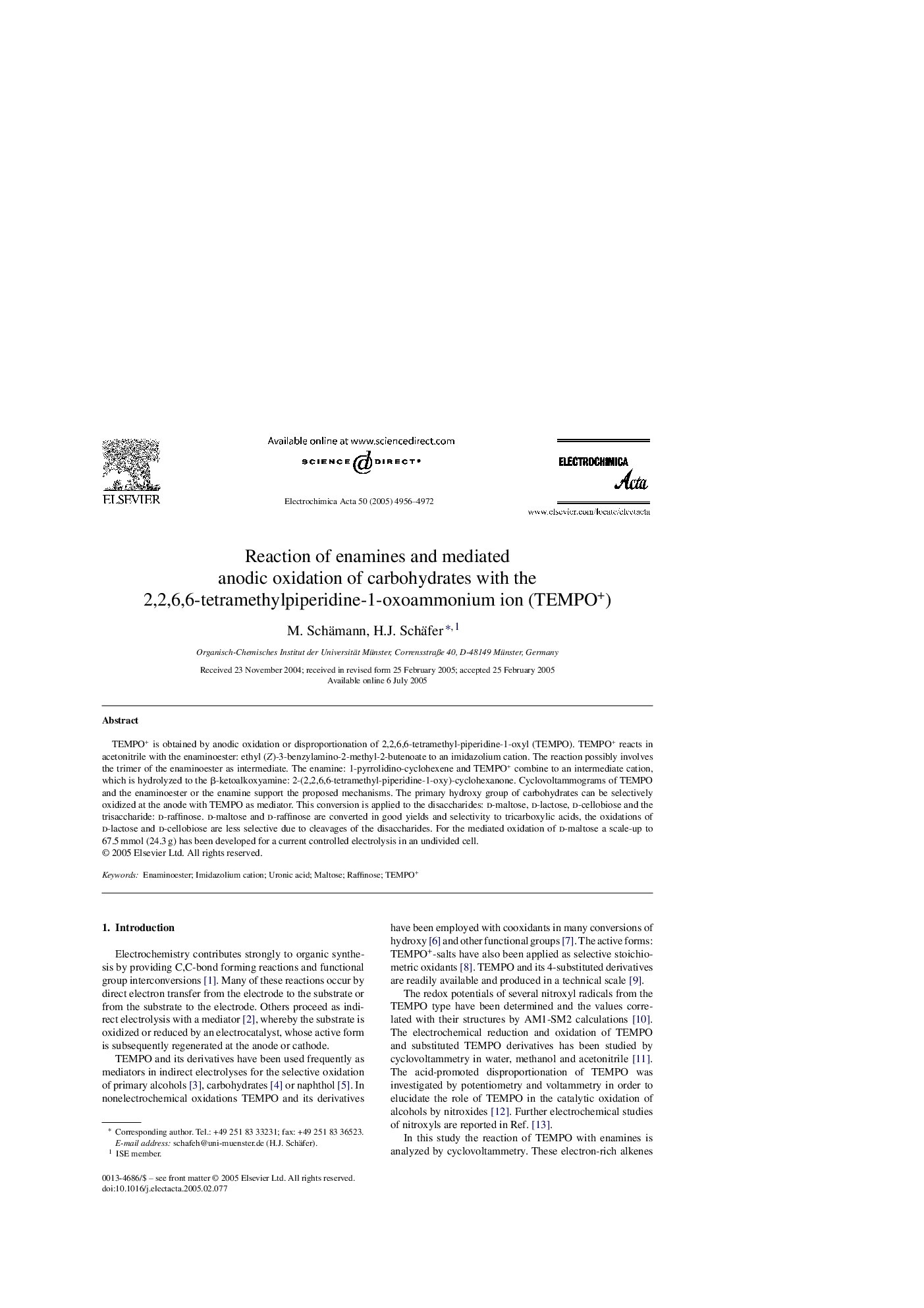| Article ID | Journal | Published Year | Pages | File Type |
|---|---|---|---|---|
| 197018 | Electrochimica Acta | 2005 | 17 Pages |
TEMPO+ is obtained by anodic oxidation or disproportionation of 2,2,6,6-tetramethyl-piperidine-1-oxyl (TEMPO). TEMPO+ reacts in acetonitrile with the enaminoester: ethyl (Z)-3-benzylamino-2-methyl-2-butenoate to an imidazolium cation. The reaction possibly involves the trimer of the enaminoester as intermediate. The enamine: 1-pyrrolidino-cyclohexene and TEMPO+ combine to an intermediate cation, which is hydrolyzed to the β-ketoalkoxyamine: 2-(2,2,6,6-tetramethyl-piperidine-1-oxy)-cyclohexanone. Cyclovoltammograms of TEMPO and the enaminoester or the enamine support the proposed mechanisms. The primary hydroxy group of carbohydrates can be selectively oxidized at the anode with TEMPO as mediator. This conversion is applied to the disaccharides: d-maltose, d-lactose, d-cellobiose and the trisaccharide: d-raffinose. d-maltose and d-raffinose are converted in good yields and selectivity to tricarboxylic acids, the oxidations of d-lactose and d-cellobiose are less selective due to cleavages of the disaccharides. For the mediated oxidation of d-maltose a scale-up to 67.5 mmol (24.3 g) has been developed for a current controlled electrolysis in an undivided cell.
